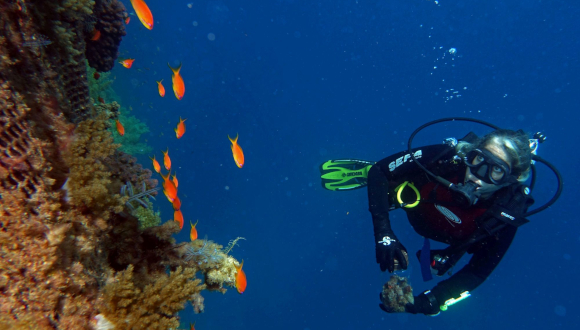Standardization of measurement can help fight plastic pollution in the world’s oceans

TAU researchers say lack of standards is a drawback in environmental research
Support this researchA new review from Tel Aviv University (TAU) has determined that global standardization of methodologies for monitoring and measuring plastic pollution in the world’s oceans can significantly boost international efforts to mitigate this troubling phenomenon.
In a comprehensive survey of all methods described in existing literature, the researchers charted the great complexity and diversity of marine plastic pollution, which makes unified measurement and accurate evaluation very difficult. According to the researchers, this is precisely why a standardized system is urgently needed. Such a system would enable comparisons, exchange of information, and effective tools for decisionmakers.
The study was led by Gal Vered and Professor Noa Shenkar of the School of Zoology at TAU’s George S. Wise Faculty of Life Sciences and Steinhardt Museum of Natural History. The review was published in Current Opinion in Toxicology.
According to Professor Shenkar, plastic pollution, which is all human-made, poses a grave and immediate threat to the marine environment, with constantly rising amounts of plastic entering the oceans. A 2013 survey conducted by Israel’s Ministry of Environmental Protection found that plastic accounts for about 41% of the volume of waste produced annually by Israelis. The Covid-19 pandemic, which has generated extreme demands for personal protective and single-use products, has further exacerbated the problem.
“Plastic wastes endanger marine life in many ways: Animals get entangled in large plastic items or swallow small particles and chemicals, consequently dying of suffocation, starvation, or poisoning,” Professor Shenkar says. “Awareness is growing and research is expanding, but the effort to monitor and prevent plastic pollution encounters many obstacles, first of all due to the enormous complexity and diversity of plastic debris.”
The researchers explain that marine plastic pollution comprises many different types of plastic and plastic products of various shapes and sizes, from huge ghost nets to nanoparticles as well as a vast range of chemical additives. Different methods for monitoring, sampling, and identifying plastic pollution relate to different properties of the sampled material. In addition to the diversity in sampling and identification methods, units used for reporting measured concentrations of pollutants also vary, from the number of plastic objects per area to the weight of particles per organism, and more.
“These differences generate confusion and lack of communication among researchers in different parts of the world, hampering our efforts to work together toward our common goal: providing decision makers with reliable data in order to promote the efforts to reduce plastic pollution and its many hazards,” Prof. Shenkar says. “We are in urgent need of standardized methods and comparable measures for monitoring, sampling, identifying, classifying, and quantifying marine plastic pollution and its impact.”
“This will maximize the power of scientific research, enhance our understanding of the impact of plastic pollution on ecosystems and marine life, and help us develop effective tools for decisionmakers facing this crucial issue,” Vered concludes.